Wildlife Photographer: Walk On The Wild Side
Expressionist American photographer, Aaron Siskind once said: ‘Photography is a way of feeling, of touching, of loving. What you have caught on film is captured forever…’ We bring you the iconic shots from The Wildlife Photographer of the Year, developed and produced by the National History Museum, London.
Capturing the most magical parts of a wildlife is what thousands of experienced and budding photographers took to doing for the Wildlife Photographer of the Year awards. Snaps of cheeky monkeys, portraits of giant sperm whales, horrific images of maimed rhinoceros – there was so much to experience in this roller coaster of a collection!
With technology taking such massive advancements in the past couple of years around the world, just stepping back for a second and looking at the winning podium of The Wildlife Photographer of the Year can be a refreshing contradiction from the rush of the technology-filled global climate.
The conservation of the animal kingdom has been a hot topic for years. From the smallest buzzy bees to the biggest of elephants, these wild lives are unique in their own way. Unfortunately, the world’s wild animals have been put in danger by poaching, hunting and humans encroaching into habitats around the world – even to the point where species are still fading slowly into extinction. Animal conservation has (quite rightly) become a major political discussion around the world. The need for us to step up and address these issues affecting the world’s wildlife is becoming one of the most important decisions we need to make on a global scale.
To see what is happening in our world today, people take to social media, the wider web or television. But people really need to open their eyes and look at the bigger picture, and the facts in front of them and see what is happening in the world. The true beauty of nature’s gifts (as well as the danger it is in) has recently been captured in The Wildlife Photographer of the Year competition, and the results are really something to marvel at, for photography enthusiast and general public alike.
In the 53rd year of the competition, more than 50,000 entries (from more than 92 countries) competed for the top prize by capturing an assortment of stunning wildlife images. The awards, run by the Natural History Museum in London, were announced in October 2017 and the winners for 2018 will be announced in March. The competition originally began in 1965 (when the National Wildlife Magazine was merely called Animals) and there were just three separate categories. But now the global competition has extended into including a greater number of categories to celebrate each different element of the struggle for natural survival.
The exhibition of 2017 photographs, having displayed in galleries around the world, have since celebrated the two winners: 49-year-old Brent Stirton, based in New York, and Daniël Nelson. Stirton’s winning image Memorial to a Species shows the disturbing scene of a shot black rhino at the Hluhluwe Imfolozi Game Reserve in South Africa.
It was taken on a Canon EOS-1DX and tells the painful truth of poached wildlife animals. Nelson’s image, The Good Life, shows a young gorilla enjoying his time in the forest greenery. Both photographers are not alien to taking quite emotionally charged images. They both work as humanitarian journalists, investing most of their time reporting on public global issues such as HIV/Aids, poverty and conflict, and they have both won numerous other awards and recognitions for their work.
We bring you the most wonderful selection of images from the 2017 Wildlife Photographer of the Year awards to persuade you, dear reader, to look beyond your cellphones and laptops and to truly marvel at the magically beautiful – and unforgivingly dangerous – natural world that surrounds us.
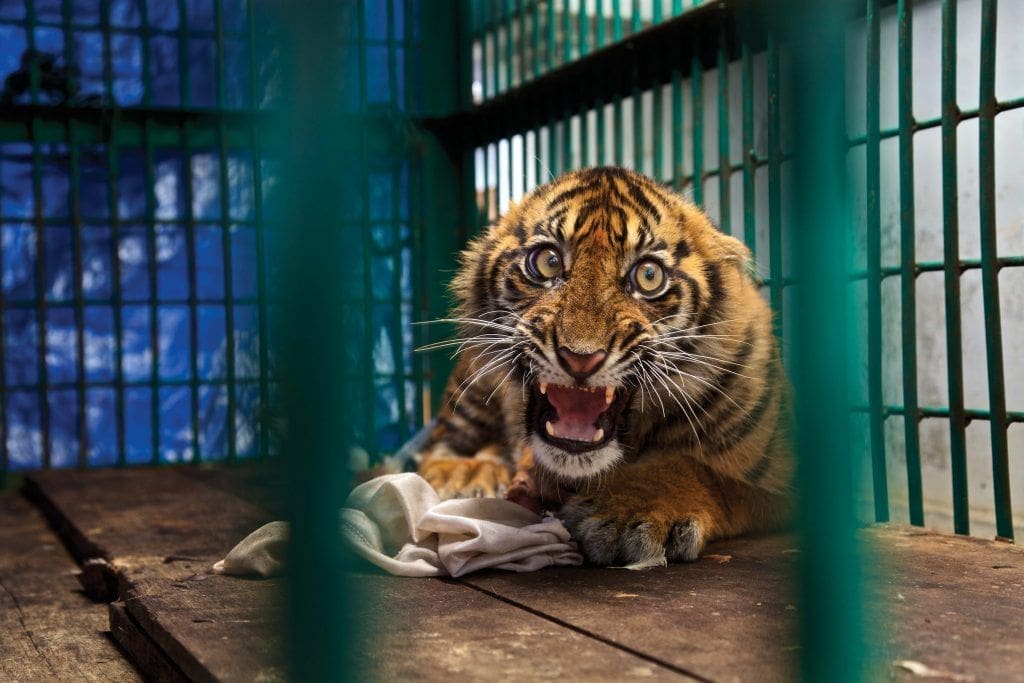
Steve Winter, USA
Finalist 2017, The Wildlife Photojournalist Award: Single Image
A back leg of this six-month-old Sumatran tiger cub was so badly mangled by a snare that it had to be amputated. He was lucky to survive at all, having been trapped for four days before being discovered in a rainforest in Aceh Province on the Indonesian island of Sumatra. The cub, however, will spend the rest of his life in a cage in a Javan zoo. Today, there are probably more Sumatran tigers in zoos than there are left in the wild. This image was a finalist in the Single Image category at The Wildlife Photographer of the Year 2017.
Canon 5D Mark II + 24–105mm lens at 58mm; 1/45 sec at f5.6; ISO 400
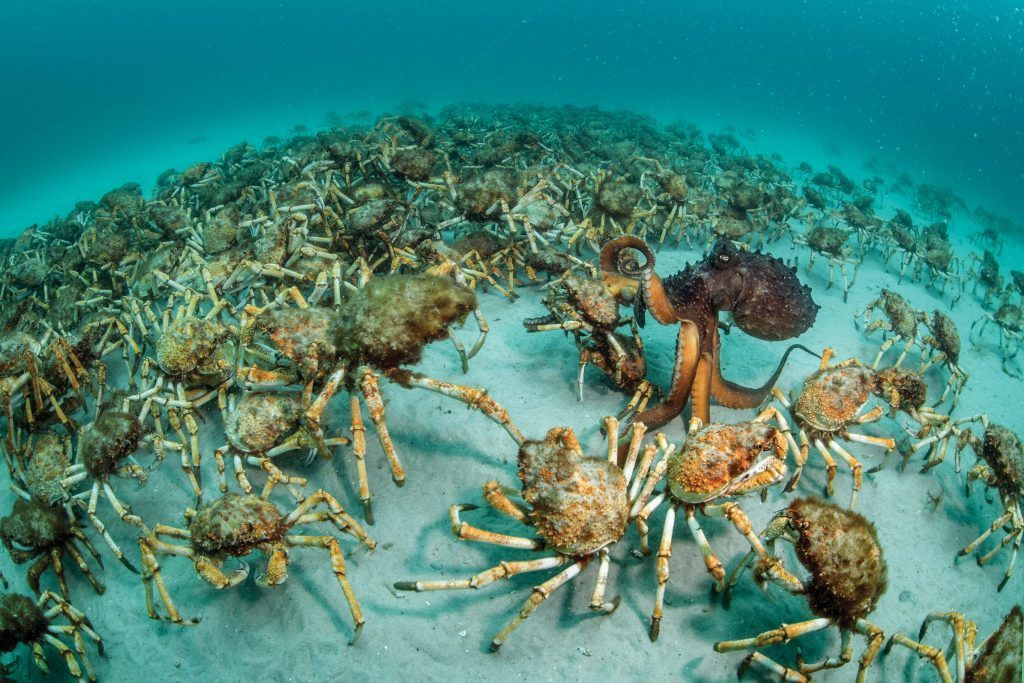
Justin Gilligan, Australia
Winner 2017 – Behaviour: Invertebrates
Caught by surprise, a throng of giant crabs clash together in panic as a big octopus looks for its latest catch. Situated off the Mercury Passage in Tasmania, Australia, the serene, blue waters mix with the deepened green and creams of the crabs’ bone-like claws. A little treat for the image is the octopus, whose tentacles spiral over its prey as it floats towards the camera. Luckily, the octopus’ tentacles were having trouble picking a crab off the ocean floor (which gave Gilligan enough time to snap the shot). This image won the Behaviour: Invertebrates category at The Wildlife Photographer of the Year.
Nikon D810 + 15mm f2.8 lens; 1/100 sec at f14; ISO 400; Nauticam housing; two Ikelite DS161 strobes
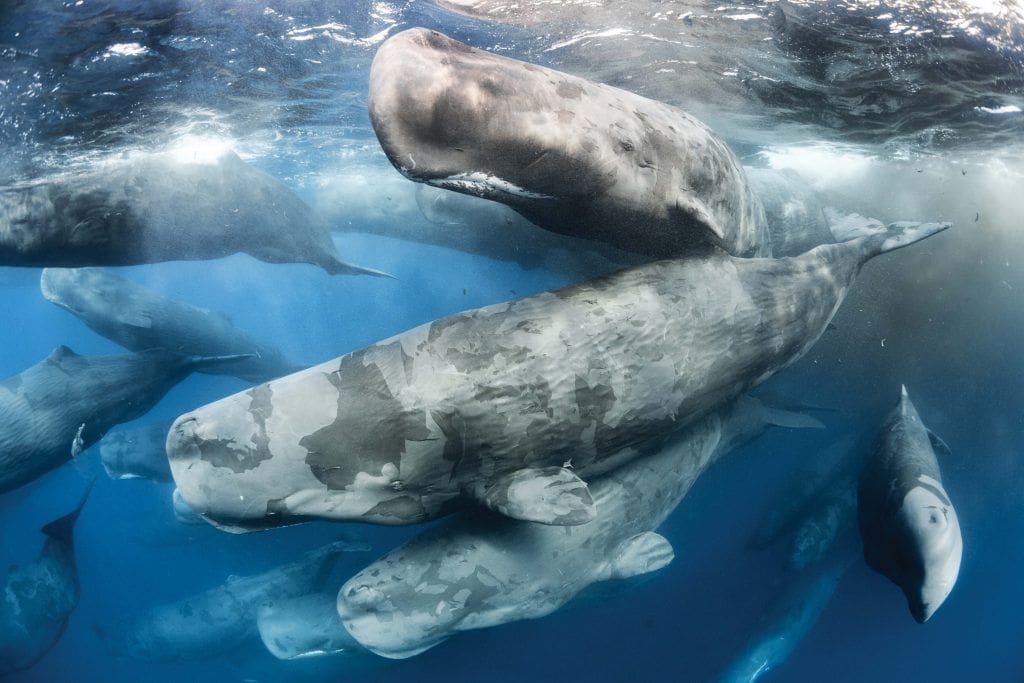
Tony Wu, USA
Winner 2017 – Behaviour: Mammals
Giant sperm whales loll together in a pack at Sri Lanka’s north-west beaches. A meeting of dozens of sea beasts, this image was captured by Wu after stumbling (or diving) on them accidentally. Sperm whales are intelligent, social beings who regularly play together in large packs. The whales slowly slap at the tide pushing against them to work their way up to a spot for mating. This image has implications if you think about commercial whaling and how that could affect the population of these grand beasts. This image won the Behaviour: Mammals category at The Wildlife Photographer of the Year.
Canon EOS 5D Mark III + 15mm f2.8 lens; 1/250 sec at f6.3; ISO 800; Zillion housing + Pro-One optical dome port.
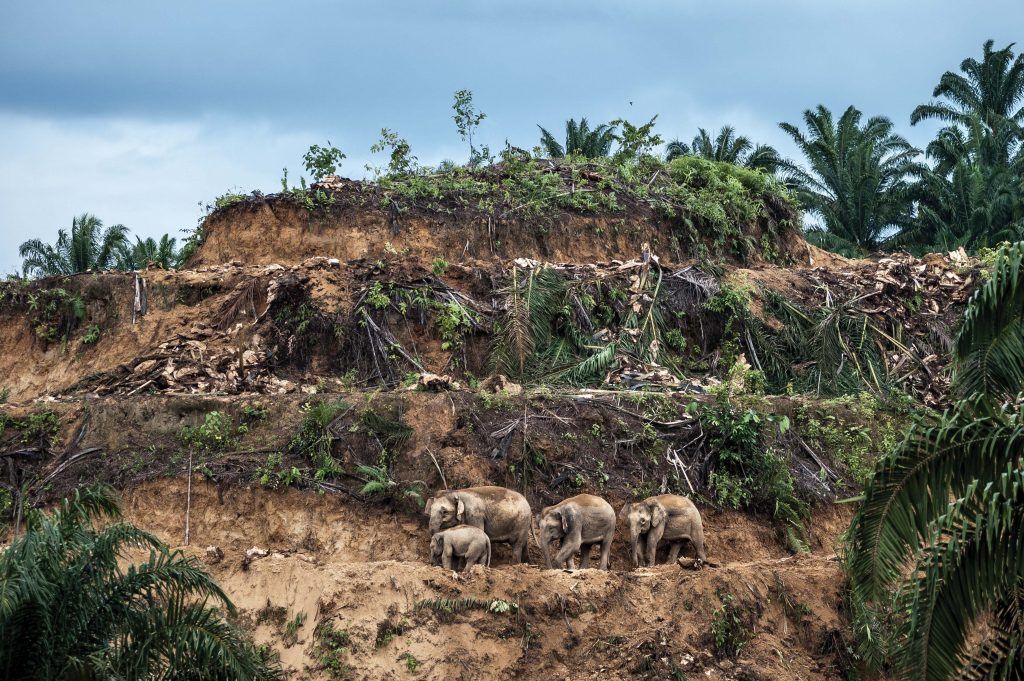
A horde of Asian elephants trudge their way slowly past Gekoski. Quickly, he grabs his camera to capture the moment as they walk through the palm oil plantation in Borneo, Malaysia. The photojournalist and filmmaker captured the majestic mammals, noting how they “huddled together, dwarfed by a desolate and desecrated landscape”. This was a rare opportunity for the young photographer. The numbers of Asian elephants are apparently dwindling due to the elephants being shot or poisoned by plantation owners.
Nikon D700 + 80–200mm f2.8 lens at 120mm; 1/500 sec at f3.2; ISO 400.

Sergey Gorshkov, Russia
Finalist 2017 – Animal Portraits
Perched on a hill on the Wrangel Island in Russia, a founding member of the Russian Union of Photographers, Gorshkov snapped this breathtaking picture of a cheeky Arctic fox stealing a goose egg from its hatch. This image shows the animal cunning and sheer beauty of the beast as it creeps away with its prize. This image was a finalist in the Animal Portrait category.
Nikon D300S + 600mm f4 lens; 1/1250 sec at f5; ISO 800; Gitzo tripod + Wimberley head.
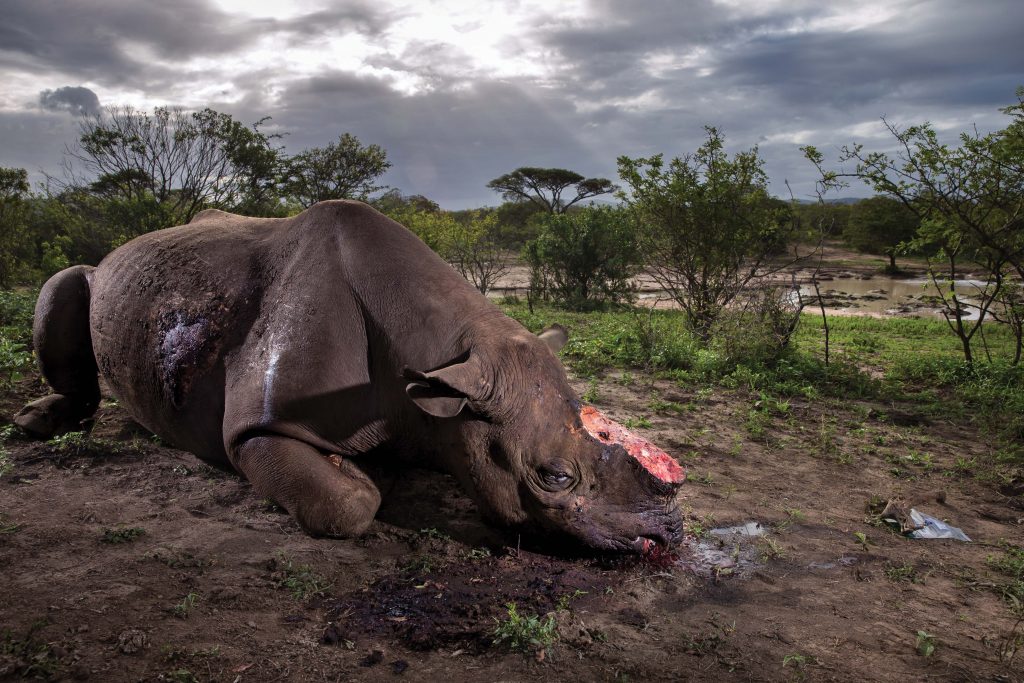
Brent Stirton, South Africa
Winner 2017 – Wildlife Photographer of the Year
Set on the backdrop of a dry-looking wasteland, this image really cuts to the core of human emotion. The viewers’ gaze is dragged into the image. But, I suppose, that is what’s so mesmerisingly good about it. It keeps you coming back for more. It feels as though turning away is impossible. Taken as part of an undercover investigation into the rhino poaching trade, the image tells the story of an animal shot then dehorned, exposing pink muscle and ligament. A powerful, meaningful, necessary winner of the Wildlife Photographer of the Year. The image also won the Wildlife Photojournalist award in the Story category.
Canon EOS-1DX + 28mm f2.8 lens; 1/250 sec at f9; ISO 200; flash.
“Brent’s image highlights the urgent need for humanity to protect our planet and the species we share it with. The black rhino offers a sombre and challenging counterpart to the story of ‘Hope’, our blue whale. Like the critically endangered black rhinoceros, blue whales were once hunted to the brink of extinction, but humanity acted on a global scale to protect them. This shocking picture of an animal butchered for its horn is a call to action for us all.” -Natural History Museum Director, Sir Michael Dixon

